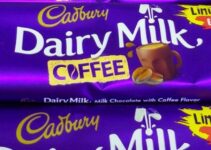PESTLE Analysis of Tim Hortons. Tim Hortons is a Canadian chain restaurant and coffeehouse multinational brand. Jim Charade and Tim Horton laid the foundation of the retail chain brand on 17 May 1964. The headquarter of the company is in Toronto, Ontario, Canada.
Some of the main products and services of Tim Hortons are as follows;
- Breakfast
- Wraps
- Sandwiches
- Bagels
- Donuts
- Tea
- Smoothies
- Coffee
According to an estimate, the annual revenue of Tim Hortons in 2021 was 3.34 billion dollars. Out of which the net income of the retail brand was 997 million dollars. However, the company is operating its business under the umbrella of the parent brand “Restaurant Brand International.”
Some of the top competitors of Tim Hortons are as follows;
- Burger King
- Dunkin’ Donuts
- McDonald’s
- Starbucks
- Lavazza
- Caribou Coffee
- Van Houtte
Today, we’ll discuss pestle analysis of Tim Hortons. It is going to focus on the external political, economic, social, technological, legal, and environmental factors impacting the retail chain brand. Here’s the pestle analysis of Tim Hortons as follows;
Political Factors Impacting Tim Hortons
Some of the political factors in the pestle analysis of Tim Hortons are as follows;
Security threats
Tim Hortons runs and operates its business in the public service industry and it focuses on public gatherings, crowds, and people. In the presence of the crowd, it raises a serious security concern and the company has to live under the constant threat. In order to minimize the risk of losses and threats, the company needs to buy an insurance plan and security guards to deal with the security concern.
Government Policies
The consumer market is becoming highly cautious about the food and what they’re putting into their bodies. They are making the government and legal institutions introduce strict laws and regulations for the food service businesses. Food, safety, and hygiene laws and regulations have made it difficult for Tim Hortons to maintain its market position. It is because food and safety increase the production and service cost, and it decreases the company’s profitability.
Economical Factors Affecting Tim Hortons
Some of the economic factors in the pestle analysis of Tim Hortons are as follows;
Household & Disposable Income
According to a statistical estimate, the household income of average US and Canadian citizens has increased significantly. On the other hand, the saving rate and saving trend have dropped to a great extent. It offers a great opportunity for Tim Hortons to offer products and services relevant to the needs and wishes of customers, and it would amplify the company’s sales.
Inflation Rate
Oil crises, international political issues, post-pandemic order, and economic recession have increased the inflation rate to a great extent. Resultantly, the purchasing power of people and their disposable income have decreased significantly. Ordinary consumers have limited their spending only to the basic necessities by cutting down all the irrelevant and extraneous expenses. It is not good news for the retail company’s business.
Social Factors Impacting Tim Hortons
Some of the social factors in the pestle analysis of Tim Hortons are as follows;
Saving Attitude
People in different cultures and civilizations have got a different mindsets towards savings. For instance, Swiss people are more inclined towards saving, approximately 60-80% of their income. On the other hand, US people save roundabout 15% of their income. While expanding Tim Horton’s business in any market, the company’s leadership should keep in mind the saving trend in the specific culture.
Leisure Attitude
People in different societies spend their leisure time differently and engage in various types of activities. Tim Hortons’ management should conduct thorough market research on the leisure activities of people and how they spend their time. It gives the company a key insight into the attitude and behavior of people, and they could target their needs accordingly.
Social trends
The consumer market trends keep on changing at different times every year. Tim Hortons’ management should keep analyzing the consumer market trends and adjust their offers relevant to the needs and wishes of customers.
Technological Factors Affecting Tim Hortons
Some of the technological factors in the pestle analysis of Tim Hortons are as follows;
Mobile Payment
Online shopping and mobile payments are becoming common nowadays; it makes the checkout process much simpler, easier, and more efficient. The retail brand should install an online payment system and equipment in its chain store branches. It makes the company’s various processes much simpler and more efficient.
Latest Technology
Technological advancement has impacted almost all the processes of different industries. It is significant that Tim Hortons should invest in the latest technological equipment and cooking mechanical devices; it would help the company to achieve efficiency in its various processes.
Legal Factors Impacting Tim Hortons
Some of the legal factors in the pestle analysis of Tim Hortons are as follows;
IPR
Tim Hortons is operating its business in the hospitality industry. Intellectual property rights could impact the company in terms of copied package design, marketing campaign, or any other type of promotional material. They may seem simple and ordinary, but they would bring a lawsuit worth millions of dollars. Therefore, the retail chain brand has to be highly cautious about its packaging, design, or marketing material in order to avoid potential threats.
Regulations
The food and hospitality regulations of different governments are different. While entering into any market and expanding its business in any country, the retail brand should keep in mind the regulations of different countries.
Environmental Factors Affecting Tim Hortons
Some of the environmental factors in the pestle analysis of Tim Hortons are as follows;
Waste Management
Disposable cups, straws, packaging materials, and other shopping envelopes are the main source of environmental waste. The company is engaging in environmentally sustainable practices by using bio-degradable material for packaging. They could easily become decomposed and become part of nature.
Conclusion: Tim Hortons Pestle Analysis Example Company
After an in-depth study of pestle analysis of Tim Hortons; we have realized that Tim Hortons is a leading Canadian brand with a significant growth rate. If you are learning about the impact of the external environment on the retail brand, then you should keep in mind the abovementioned macro-environmental political, economical, social, technological, legal, and environmental factors impacting the company.

Ahsan Ali Shaw is an accomplished Business Writer, Analyst, and Public Speaker. Other than that, he’s a fun loving person.


